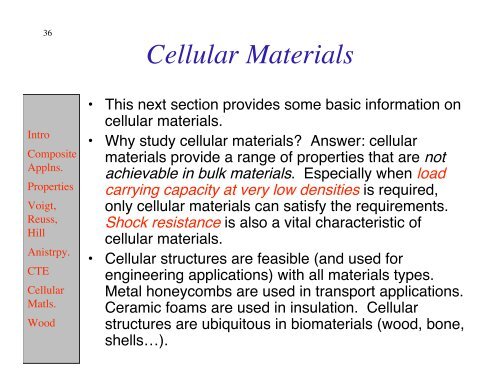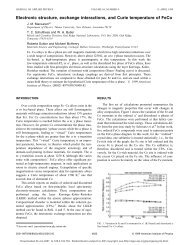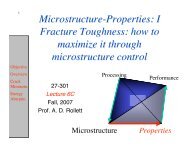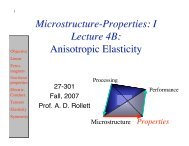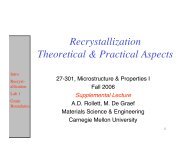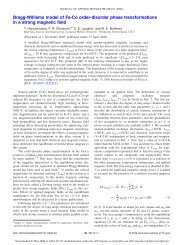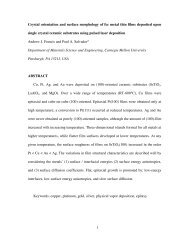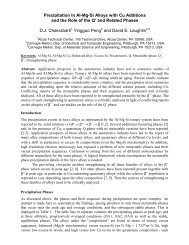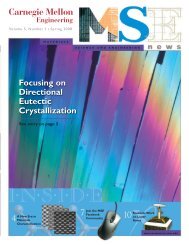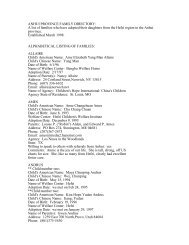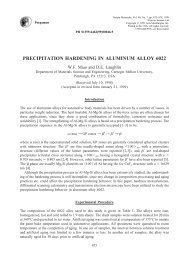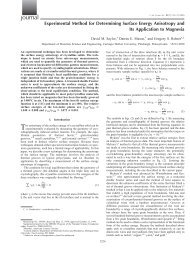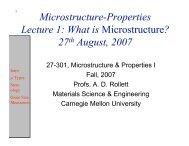L7 composites - Materials Science and Engineering
L7 composites - Materials Science and Engineering
L7 composites - Materials Science and Engineering
You also want an ePaper? Increase the reach of your titles
YUMPU automatically turns print PDFs into web optimized ePapers that Google loves.
36<br />
Intro<br />
Composite<br />
Applns.<br />
Properties<br />
Voigt,<br />
Reuss,<br />
Hill<br />
Anistrpy.<br />
CTE<br />
Cellular<br />
Matls.<br />
Wood<br />
Cellular <strong>Materials</strong><br />
• This next section provides some basic information on<br />
cellular materials.<br />
• Why study cellular materials? Answer: cellular<br />
materials provide a range of properties that are not<br />
achievable in bulk materials. Especially when load<br />
carrying capacity at very low densities is required,<br />
only cellular materials can satisfy the requirements.<br />
Shock resistance is also a vital characteristic of<br />
cellular materials.<br />
• Cellular structures are feasible (<strong>and</strong> used for<br />
engineering applications) with all materials types.<br />
Metal honeycombs are used in transport applications.<br />
Ceramic foams are used in insulation. Cellular<br />
structures are ubiquitous in biomaterials (wood, bone,<br />
shells…).


